Three days on a pirogue down the Tsiribihina River, travelling through an ever-changing landscape of sandbanks, cliffs and mangroves. Nothing but silence and nature around us.
What’s the sound of silence? Nothingness doesn’t exist. You may escape cities and towns and run to the darkest corner of the Amazon, or the deepest reach of the Sahara, but you’ll never find total silence. Insects will keep chirping, branches falling, the wind blowing, shifting sand dunes.
Perhaps silence is the sound of nature. When you leave ‘civilisation’, leaving the sound of engines and electronics behind, nature is all that is left. And it is never ‘silent’. Sounds travel with you. Keep you company. Soothe you.
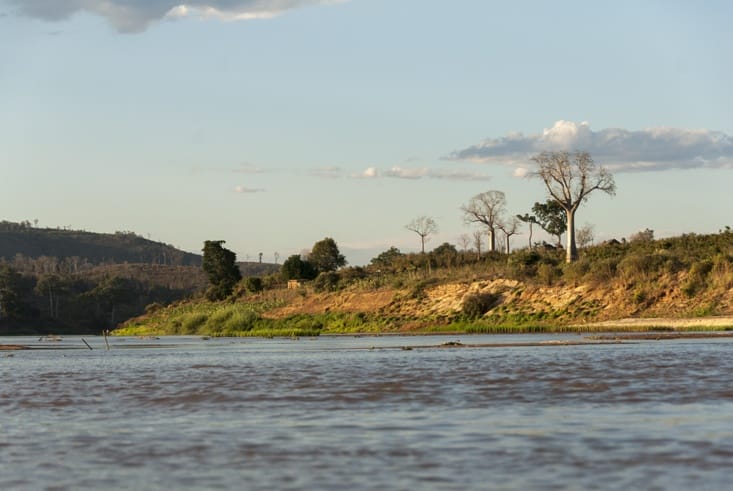
We spent three days descending the Tsiribihina River. Three days huddled in a dugout pirogue, floating down the river, accompanied by the rhythmic paddling of the piroguier, the whisper of the breeze drawing wavelets on the river surface, the ruffle of branches after the jump of a lemur.

Where is the Tsiribihina River?
One of the main rivers of central Madagascar, the Tsiribihina is born near the village of Miandrivazo, at the confluence of two other rivers. It flows for about 100 km through a surprisingly diverse landscape, until it reaches the Mozambique Channel.
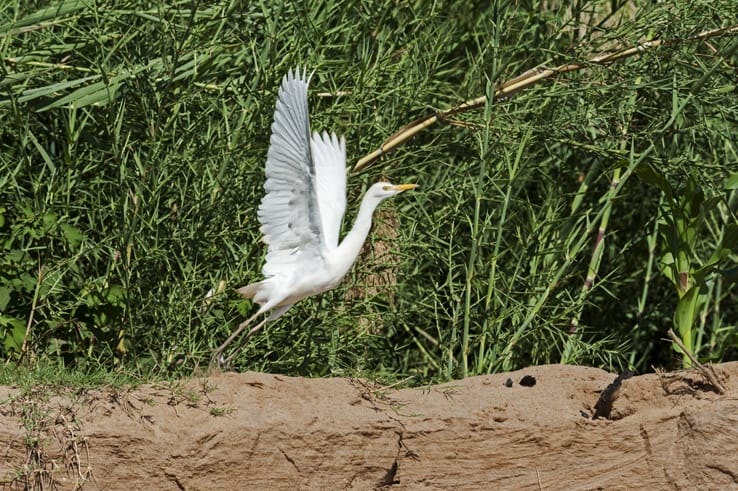
Descending the Tsiribihina River is one of the top tourist activities in Madagascar, but it is no recent invention. Tours on the river have taken place since colonial times; well-heeled French colonists were taken to visit the tobacco plantations near the riverbanks with pirogues, as there was no way to travel other than by river.
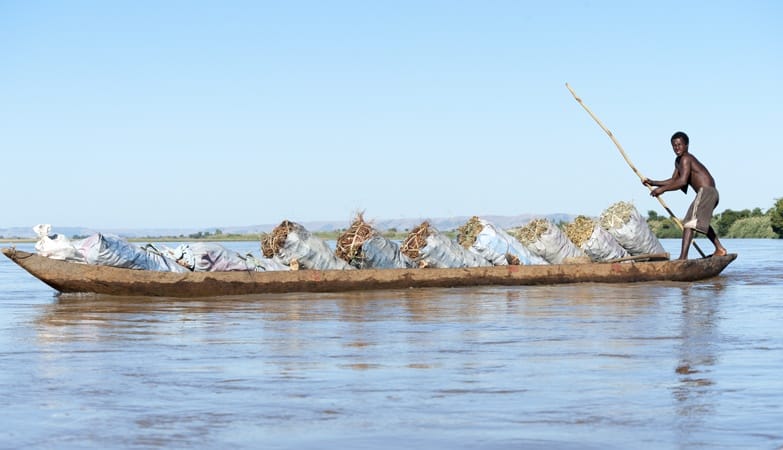
Fast-forward about 100 years, and the situation hasn’t changed much, The river is still the lifeline of the territory. In the absence of roads, daily life happens on the river. The Tsiribihina is – at the same time – highway, marketplace and playground. However, between one hamlet and another, the river is tranquil and impossibly beautiful.
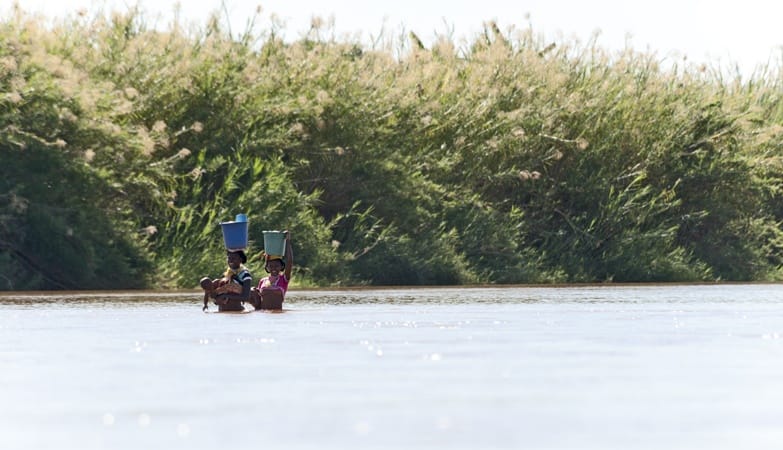
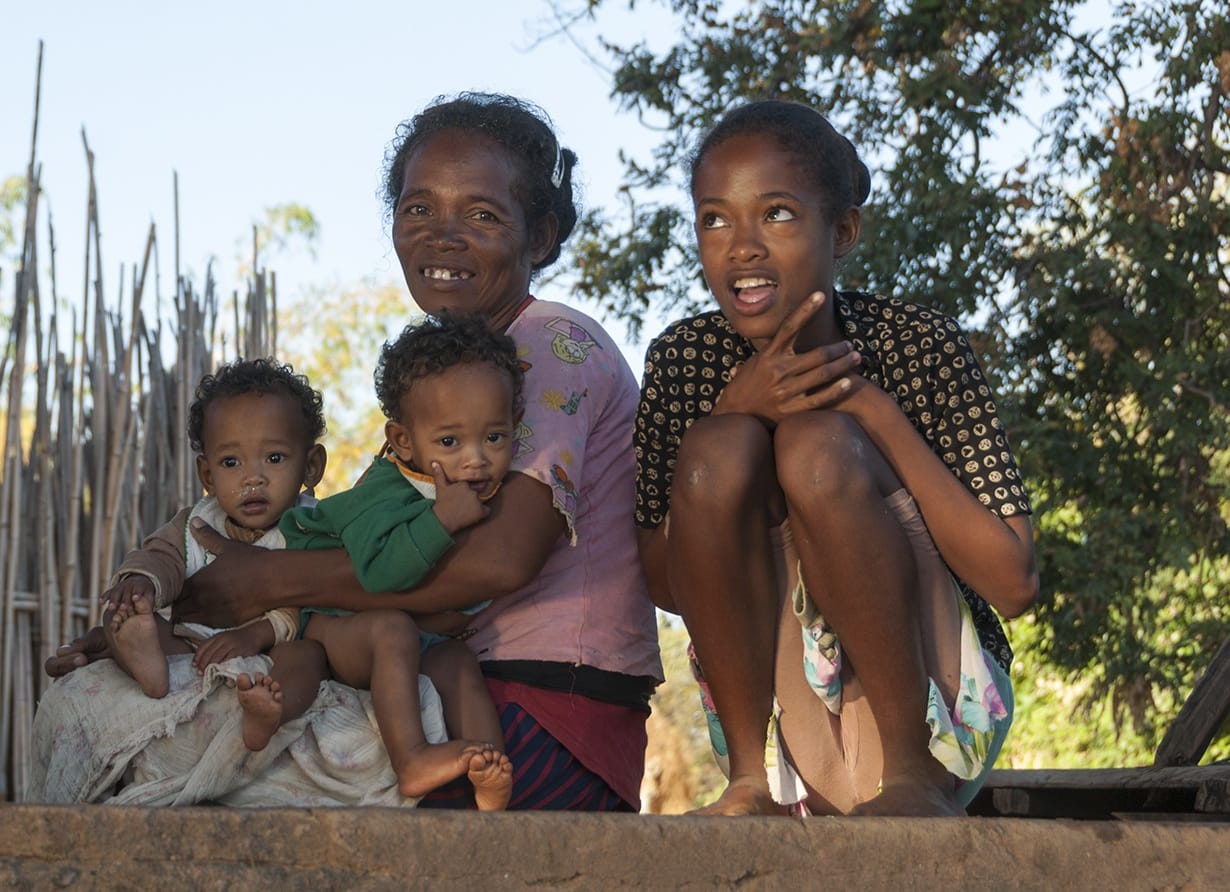
Floating down the river
We left Miandrivazo early one pink-dusted morning. The town was already awake, as we loaded our luggage and belongings on the pirogue. Our rucksacks became our seats and backrests. Loaded with food and provisions for three days, we floated away.

The river was shallow and slow-flowing, tea-coloured, under an enormous sky. Lying on my back under a wide-brimmed hat, I began to contemplate. Hills of red earth and rice paddies. Small trees and reeds grew on the riverbanks. Pirogues loaded up with people and produce floated along, and occasionally we heard the roar of a chaland, the river’s taxi-brousse, to remind us that ‘civilisation’ was just around the corner.
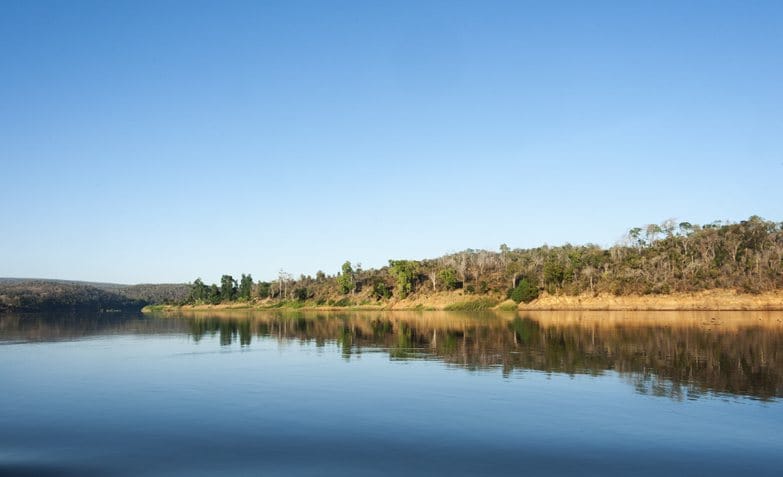
Mostly, though, it was us and nature. I saw a bright green flash moving across. A Madagascar bee-eater, said our guide Jimmy. We spotted prancing herons and egrets, as elegant as damsels going to a ball. Jimmy was an excellent birdwatcher, his eyes trained after years leading tourists on the river. He told us of king birds and birds of paradise, of coucals and whistling ducks, taking their name from their song, reminiscent of a whistle. He told us all the birds’ Latin names, that inevitably finished with Madagascarensis.
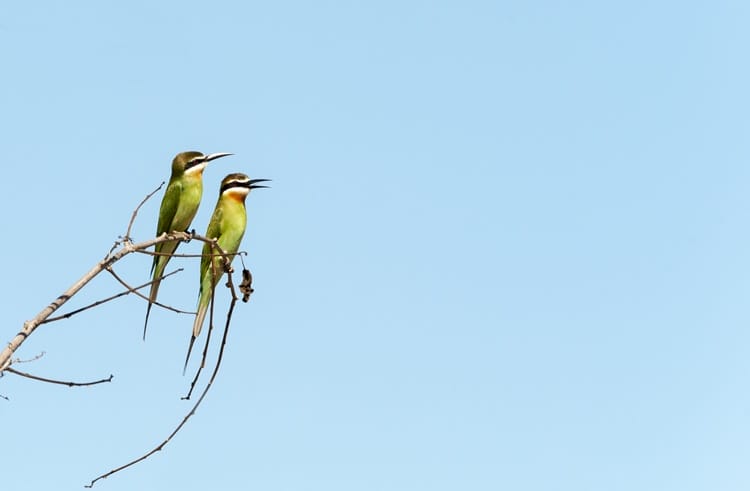
We watched two crows fly together, stop on the same branch, then take off again, following each other’s flight. ‘They are the souls of two lovers’ said Jimmy. Together in life, together in death. I spied the crows, by then two faint dots on the horizon, flying as one.
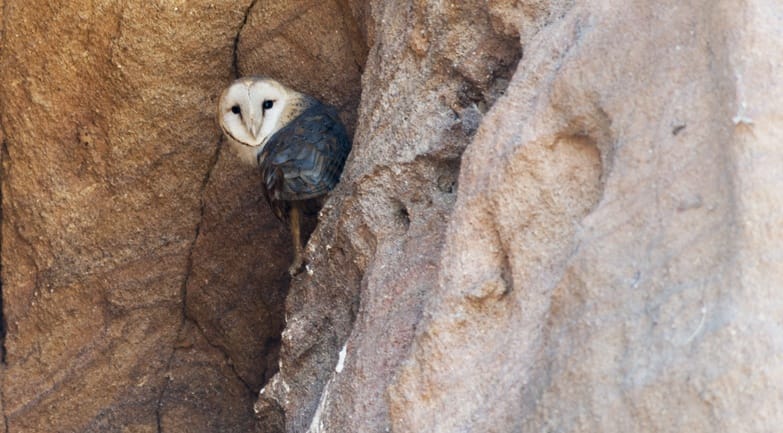
Wildlife and tales on the Tsiribihina
By the second day, the landscape had changed. Reeds and sandbanks had given way to cliffs and forest. The river was deeper and faster-flowing, wildlife more abundant. Following Jimmy’s expert eye, we spotted our first lemur, a Coquerel’s sifaka, perched on top of a tree, elegant in his maroon-white suit. Then, we heard a sharp noise, like that of a whip. It was a Nile crocodile diving, snapping his tail on the water surface.They are abundant in these waters. Tsiribihina means ‘do not dive’ in Malagasy. A sharp reminder that a dip may be fatal.
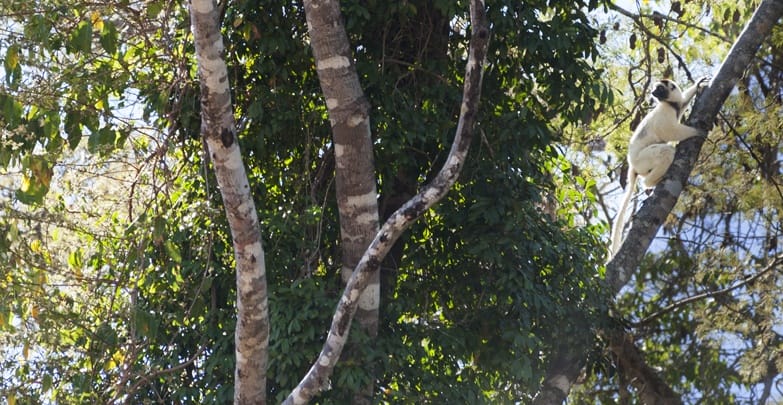
Time on the pirogue was spent contemplating, enjoying the sounds of nature, and listening to Jimmy’s stories. He told us of the spirit world, where people go when they die. The separation between living and dead is not as we imagine it to be; in Madagascar, death is not a one way road.

Sometimes the dead return to Earth in the shape of animals, appear in their relatives’ dreams, communicate through the tromba, the village shaman. There is even a celebration every few years; it is famadihana, during which the dead are taken out of their tombs and dance with their families. I asked Jimmy if he believed in ghosts. In the west, people usually laugh when I ask this question. Jimmy replied with no hesitation. Of course.

Sometimes we met people. Children seemed to have a sixth sense; whenever we stopped for lunch, a small group of children and teens arrived, climbed on a tree and watched. Usually, the gang leaders came up to us after a little while, asking for bonbons and pictures, and giggled like crazy when they saw themselves on the camera screen. I wanted to send them some, so I asked Jimmy for their address. But they have no address, he said.
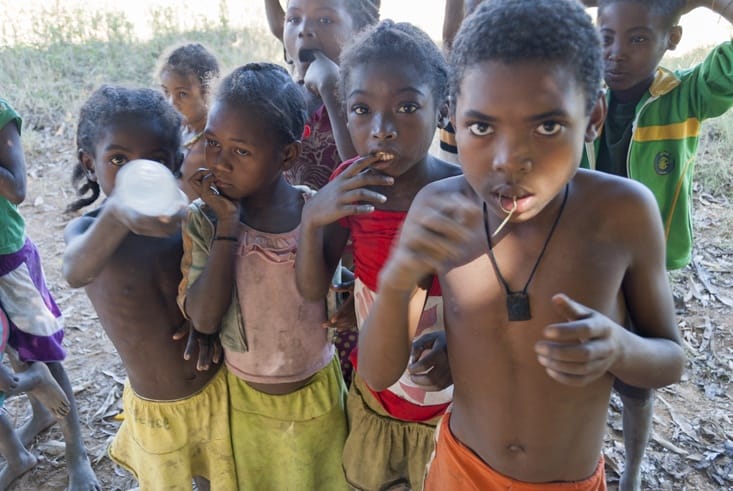
The river at night
We pitched out tent on sandbanks, and laid on a mat while the night fell around us. Our boatmen, Mario and Rivo, cooked dinner from a small wood fire burner on the back of the pirogue. They were both Miandrivazo locals, and the river was their living. The Tsiribihina was a gigantic vein, feeding not only the land, but also the people. Rhythms of life are dictated by the river; everything slows down in the rainy season, when the Tsiribihina floods and the land is battered by winds.

Pirogues have no engine; the trip downstream takes three days, upstream it can take up to seven. Downstream, the piroguiers use wooden paddles to steer the pirogue and help it along. The way back is long and punishing; the current is powerful and they must use long wooden poles to push the boat, like punts in Cambridge. Mario and Rivo are only able to do the trip twice-monthly, and the tourist season only lasts for a few months each year.
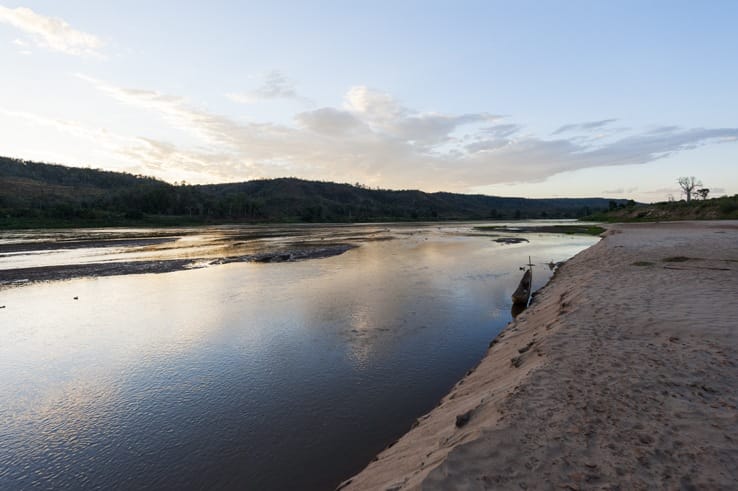
At night, we saw some piroguiers travelling upstream. Only the whoosh of the water revealed their presence; inevitably, they travelled in the dark, using starlight to illuminate their way. They know every tree, every bend, every islet, said Jimmy.
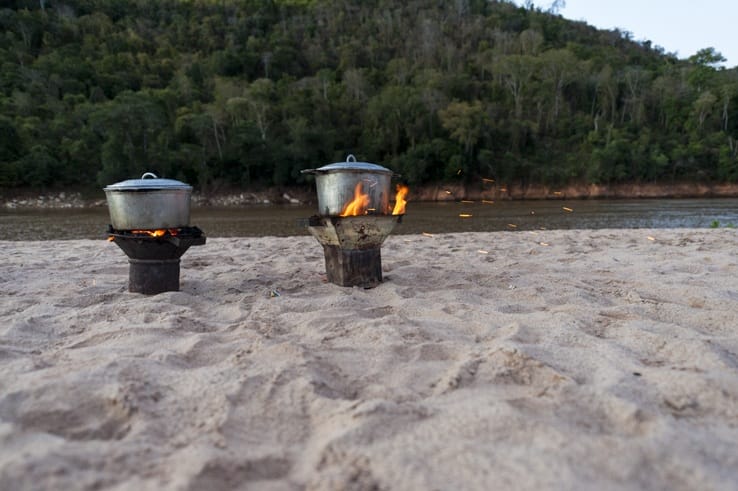
We descended the Tsiribihina on the three nights before Eid-al-Fitr. It was just before the sickle appeared; we had three moonless nights, when the stars shone like beacons from above, and the Milky Way crossed the sky like a path of light. I had never seen anything similar. We’ve seen amazing stars in Wadi Rum, in Western Mongolia and in the Thar Desert, but nothing compared to the Milky Way of the Tsiribihina River.
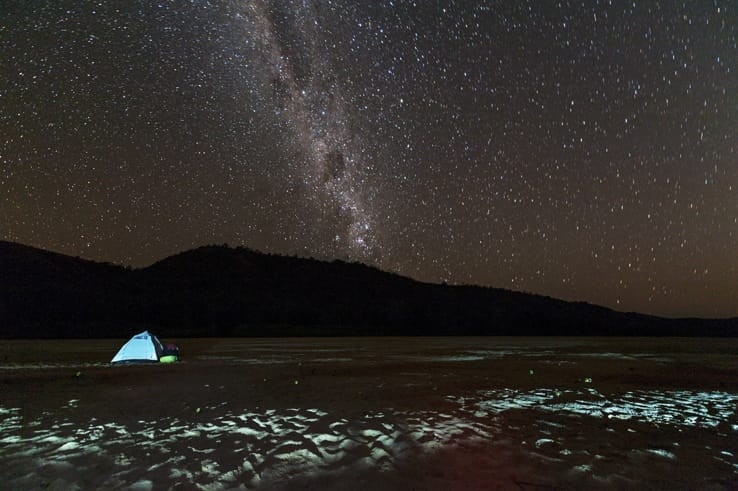
So we laid on the mat, contemplating the marvel above, counting shooting stars and listening to the silence. The campfire crackled. The river flowed. Noises came from the forest just behind; hums and patters, cracks and whirrs. Silence.
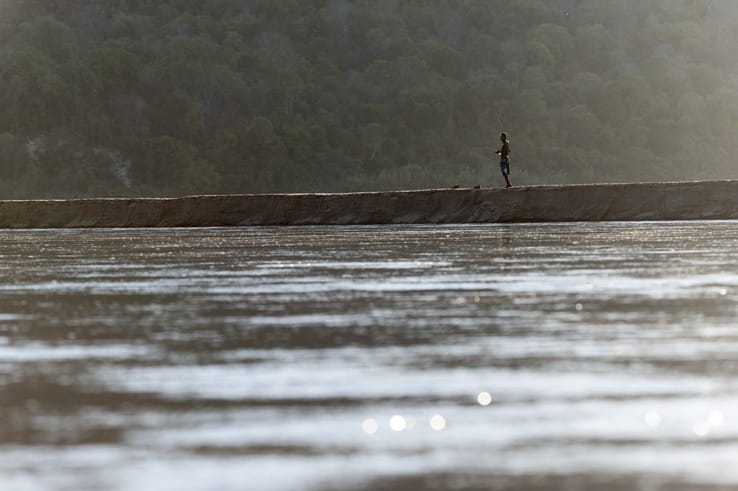
We would like to thank Lanto of Madagascar Tropic Voyage, who generously offered a media discount in exchange for consideration for an article. We loved the experience and, as always, all opinions are our own.

WOW that night photo! Did you take it? What camera/settings did you use?
Hey Sarah, this time F-stop was 2.8 and exposure 93 seconds (with a tripod, of course). Thanks for the kind words. It was a wonderful night!
That was really a great post and I felt like I was along for the journey. Some of the photos are incredible and I really appreciate the angels and effort you put into making them special. Well done and I look forward to hearing more on Madagascar.
Thanks Tim! It was an amazing experience, highly recommended before it’s overrun by mass tourism!
I do love this story! It made me feel the life of the river so vividly that I’d pack and go there right now. Beautiful pics, guys 🙂
Thanks Ivana. It was an amazing experience, especially at night…
Oh guys, this post and photos really makes me want to explore this part of the world that for some reasons is never been high on my list. You had just an incredible trip, very authentic and so close and to direct contact to the nature. That photo of your camp during the night is outstanding by the way 🙂
What a stunning place, it sounds incredible… Those stars!!
This feels like one of those experiences that I’d want to pinch myself to believe if it was true. There’s something romantic about the water anyway, but then to be somewhere that is so different from other places I’m used to makes it that much more interesting. The food cooking on sticks, the cargo transport, all the animals. But, that night sky and the stars. Wow.
My gosh, I had never (shamefully) heard of the Tsiribihina River. It looks like a magical place – and that night photo is award winning!
Wow to your night shot – the photography is incredible.
Love how you’ve taken these photos with so much care. The minimalism in some of them works very well in representing life in Madagascar. I’ve always wanted to go there, and look forward to more stories of your travels on that wondrous island.
This sounds amazing!! And that photo of the starry sky, ugh! I love it. I love sitting and staring at the stars at night time. People think I’m mad sat in the cold, dark looking at the sky 🙂
Very impressive, what else can I say … this is typically one of those places off the beaten path. The picture of the campsite is just stunning, I’d probably lie wide awake all night, gazing at the stars…
Looks like a wonderful experience! I love all the wildlife you were able to see–great photos! The photo of the stars is amazing!!
You should girl! You’d love it!